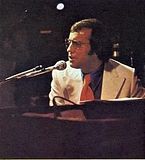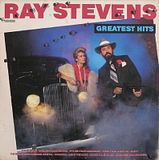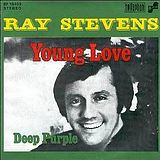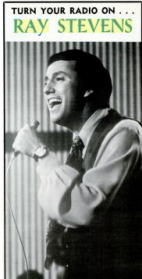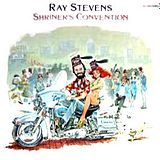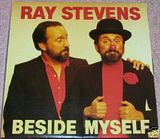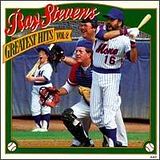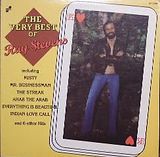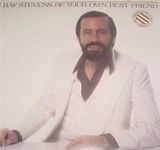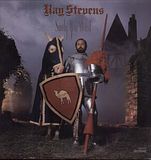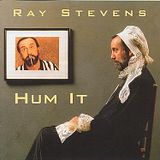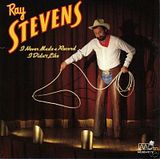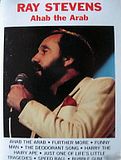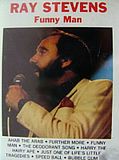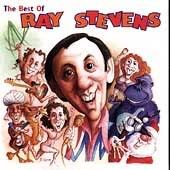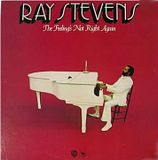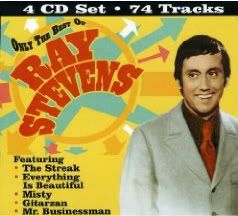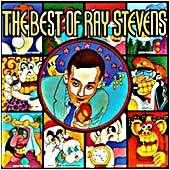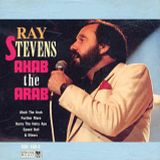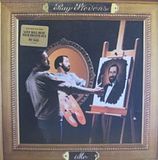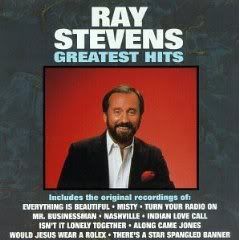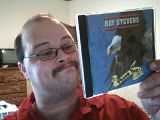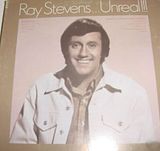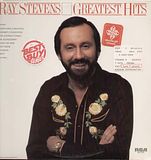 The August 3rd issue of Country Weekly features an article about Ray Stevens. The author of the write-up is Kip Kirby. For those who read my Animation blog you'll also know that I'm a moderate fan of George Strait as well. I'm not a hardcore, die-hard fan as I happen to be with Ray Stevens but Strait is among my favorites. So, it's a bonus having George Strait on the cover as well as the article about Ray Stevens. This blog entry is about the Ray Stevens article, though...
The August 3rd issue of Country Weekly features an article about Ray Stevens. The author of the write-up is Kip Kirby. For those who read my Animation blog you'll also know that I'm a moderate fan of George Strait as well. I'm not a hardcore, die-hard fan as I happen to be with Ray Stevens but Strait is among my favorites. So, it's a bonus having George Strait on the cover as well as the article about Ray Stevens. This blog entry is about the Ray Stevens article, though...The name of the article is "Everything's Still Beautiful" and it sums up some of Ray's latest happenings for the public-at-large who don't follow Ray's career as closely as a lot of us do. There's a nice picture on page 33 and 34...he's in his famed red suit with the back shirt underneath. This is the "look" he typically wears in concert...a lot of the concert pictures from last year and this year feature Red Suit Ray. The article highlights the trucker CD that I've written about a few times, One for the Road. It spotlights a few of the song's from the CD. According to the article, you'll find out which song is one of his favorites from the CD. It's one of my favorites as well.
The TV program that Ray's been working on behind the scenes and hoping to find an outlet for, We Ain't Dead Yet, is mentioned in the article and Ray's recent political appearance on Fox News Channel is highlighted, the appearance he made on Hannity. Elsewhere, the article mentions a future appearance on Huckabee is in the works. The appearance will be August 1st on Fox News Channel...and you can also catch it August 2. The show airs at 8pm eastern time both days. This appearance is a make-up date...he had earlier been scheduled to appear on Huckabee's program around the time of the Hannity appearance but it was postponed.
On page 34 there's a picture of Ray in concert up at the top of the page from 2009 and below there's a smaller picture of Ray and George Lindsey from 1998. Ray gives his thoughts about comedy songs verses love ballads and points out how he's been able to maintain a career for over 50 years, mostly with comedy songs, when all the "experts" advised him novelty songs would end his career. This viewpoint is the essence of Ray Stevens, actually. His career often stands against the conventional logic and the traditional methods of the run-of-the-mill act. Once someone says Ray can't do this or can't do that chances are Ray has done it more times than anyone can count.
When record labels heard his idea of direct-marketing home videos they didn't enthusiastically embrace the idea. Once Ray sold several hundred thousand copies of a certain home video in 1992, Comedy Video Classics, suddenly record labels came out in support of the idea and soon home video sales were a big business for a period of time in the early to mid '90s. So, in a lot of ways, if you've read much of my other blog entries, it's almost unfair to compare Ray to other singers because he's had to prove critics and skeptics wrong countless times with the idea's and material he released.
I'm sure in 1970, when "America, Communicate With Me" was a single, there were critics and people at the record label wondering about this song. True, it said a lot of things that perhaps the mainstream didn't want to hear...but you can't argue with it's impact among the adults in 1970. A radio format catering to those over 40, Easy-Listening, wasn't nearly as widespread then as the format is now under the varying titles of Adult-Contemporary and Adult Top-40. Ray had a Top-15 hit with the single on adult music radio...in the mainstream pop audience it peaked just below the Top-40. Again, it was a song that I have a feeling people advised him not to release...but he did so anyway. He wrote it, too. You can find the song on several CD's at various on-line music stores. Depending on which on-line store you visit you may even be able to purchase an MP3 of the song for 99 cents. It's a topical song...so if you're into history or are simply curious about 1970 pop-culture or you happen to be a long-time Ray fan who just doesn't have that particular song in your collection anywhere, go see for yourself how good the song is.
"Misty" is another example of a song that defied logic...long remembered as a slow love ballad from Johnny Mathis, Ray turned up the tempo and used a banjo, fiddle, and a steel guitar as the main instruments. The results won him a Grammy in early 1976 for Best Arrangement. He kept this same up-tempo arrangement idea for his debut single for Warner Brothers, "You Are So Beautiful", and had a Top-20 country hit with it in 1976...but "Misty" went into the Top-5 on the country charts and Top-20 pop in 1975.
52 years into a recording career...having successes with love ballads-both pop and country, plus many off-the-wall comedy songs which is what he'll be remembered for...and still actively recording and touring...says quite a lot. You can see why everything's still beautiful for Ray Stevens.


